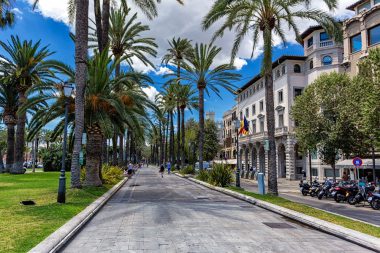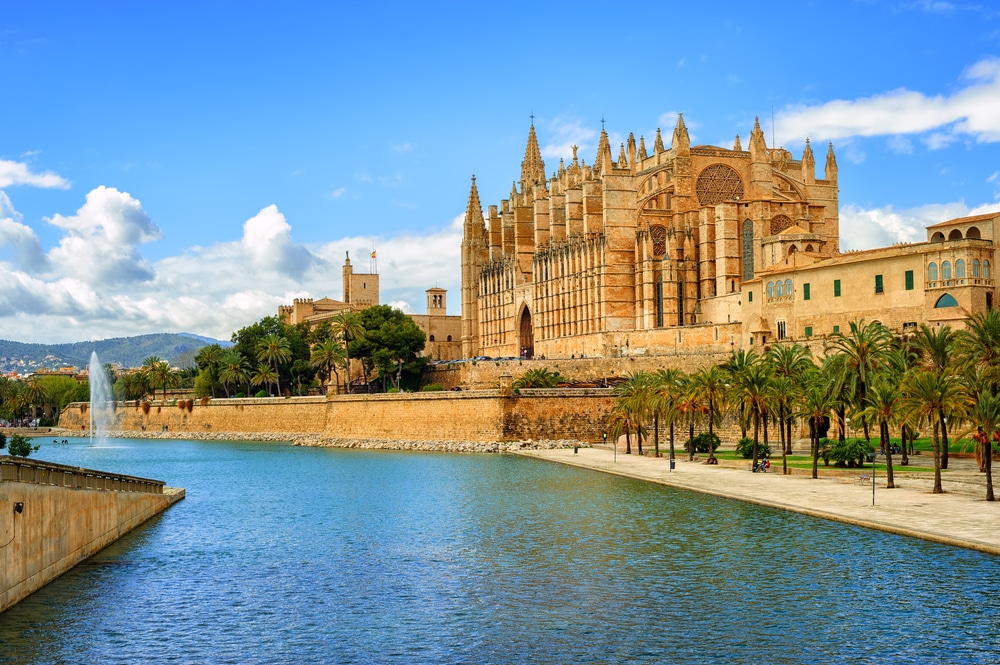In our five-part series “Mallorca – in the magic of the south”, we draw a comprehensive picture of the popular Spanish Balearic island, provided with a wealth of valuable information and background knowledge. Who has always wanted to know where the most remote corners and villages are? In which neighborhoods are the best tapas bars hidden? Where are the most beautiful beaches, free of mass tourism? Which mountain peak should you climb? One thing is certain: Mallorca is an island for everyone. Impressive mountain regions with glittering salt lakes, quaint restaurants with typical Mallorca cuisine, stalactite caves, wonderful beaches and colourful fiestas that stand for Spanish liveliness – Mallorca can certainly not be accused of a lack of variety of offers. The individual regions of the island have different characteristics. With the following series, we would like to give suggestions for selection.
Palma and the southwest coast – intoxicating wealth in a small area: full of contrasts, surprises and contradictions
The lively capital Palma and island beauty invites. It is located on the Bahía de Palma, a deep bay in the southwest of the island. In the most beautiful city on the Mediterranean, the heart of the island beats. Mallorca’s sophisticated metropolis and capital is Palma. Even though the official name of the city is no longer “Palma de Mallorca” since the end of 2016, little has changed. The sun-drenched city still offers something for every taste: beautiful beaches, excellent food, a terrific shopping experience and excessive celebrations. Between a rich historical heritage and urban flair, the beautiful capital combines many advantages. To really enjoy the atmosphere of the city, it is recommended to leave the car in an underground car park or in one of the blue marked parking zones. Palma’s city fathers are focusing on traffic calming.
Palma at a glance – escapes and surprises
The heart of the city beats at the huge Plaça d’Espanya. Most of the roads flow together here. Winding, narrow and cobblestone streets give the old town its special charm. Gothic places of worship, old city palaces, peaceful courtyards. magnificent aristocratic houses, incense-filled church darkness – wealth is palpable almost everywhere. Not to forget the hustle and bustle in the glaring light of the market halls. In Palma, the visitor strolls through one of the largest preserved medieval cities in the Mediterranean.
La Seu
Like a gigantic ship, La Seu blurs into the sea of houses in Palma. The imposing Gothic cathedral is not only the largest building on the island, but certainly also the most precious. Similar to a hen, the most famous island building towers over the sea. The cathedral inspires with a 110-meter-long nave, high columns and a fascinating rose window, which conjures up colorful plays of light when the sun is shining. No less enchanting is the Gaudi candlestick above the altar. Recently, you have been allowed to climb onto the roof of the impressive building. From the top, there is a breathtaking view over the city and the sea. The Castel de Bellver offers great insights and views. The city’s royal castle is located about three kilometres from Palma and surprises with remarkable insights into history as well as a fascinating view over the city and the harbour. Palma’s harbour is where the horns of the cruise ships sound loudly in summer and awaken dreams of the big wide world. The waterfront stretches from one end to the other, overlooking the labyrinthine old town. For foot-weary city visitors, a one-hour harbor tour with Cruceros Marco Polo is a good idea. After this relaxing change, Porto Pi, the shopping paradise, beckons. It is located at the end of Avendia Juan Miro, not far from the port of Palma.
Ballermann
What would Palma be without its cesspool of sin? Contemplative, quiet, restrained? In any case, the locals are fed up. The flow of visitors has been getting out of hand for some time. Full alleys, excessive rents and, last but not least, the countless cruise passengers that flood Palma’s old town. To upgrade the Platja de Palma, the city administration adopted a master plan in 2015. Within 10 years, the notorious cesspool of sin is to become a venerable holiday mile. Restaurants, beach bars, shops and clubs – Platja de Palma is being diligently renovated. The hotels go one better and grow exclusively upwards. Meanwhile, several new boutique hotels are being built. Former, often run-down accommodations already rank in the four-star category. The party remains. Only in the future she should be more civilized.
Oases of peace and trendy districts with a lot of charm

Beautiful places and culinary insider tips
A break from a stroll through the city, sit down somewhere and just look, that’s what you can do on Palma’s squares. Let’s linger briefly at the traffic-calmed town hall square. With a beaming smile, you can serve delicately melting sweets in the ice cream parlor on Plaça del Cort. No less seductive is the selection of “Tast” in Carrerd de la Unió. The Tapas Bar is famous for its specialties. The best grilled fish, but at fairytale prices, is conjured up by the chef in the east of Palma. “Es Mollet” also offers a beautiful view of the small port of Portixol. On the other hand, Sibilla is cheap and also delicious: the restaurant stands for all those who are hungry. In the traffic-calmed shopping street of Blanquerna, you can find the perfect breakfast, lunch and dinner at great prices.
Culinary tips for Santa Catalina:
- “La Golondrina”, the vegetarian restaurant.
- “Bros” with Spanish-Mediterranean cuisine.
- “Simply Delicious” with dishes from the Middle East.
- “Can Frau”, a popular bar in the market hall of Santa Catalina.
Sun, beach and sea
On the enchanting southwest coast, just a stone’s throw from Palma, there are 15 fantastic beach sections. Hidden bays on the turquoise blue water invite you to dream. A six-kilometre-long sandy beach leaves nothing to be desired. For all party-goers: Only section 6 declares itself a party stronghold. Palma has a lasting effect; Frédéric Chopin once found the right words: “I am in Palma, under palm trees…; at night you can hear guitar and singing for hours… In a word, a wonderful life.” Mallorca, Part 2 – The Northwest of Mallorca Mallorca, Part 3 – The North of Mallorca Mallorca, Part 4 – The Southeast of Mallorca Mallorca, Part 5: The Center of Mallorca


